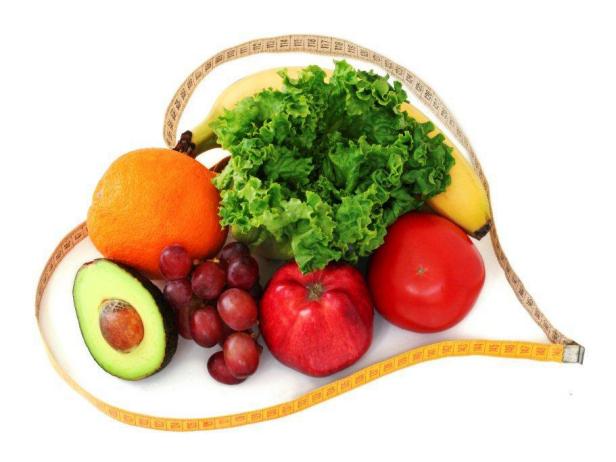
Your heart health is an important concern. Fortunately, there are many healthy foods to incorporate into your daily routine. You might also want to consider avocados, tomatoes, and other healthy foods. These foods are packed with nutrients, including the antioxidant beta-cryptoxanthin and other carotenoids, flavonoids, vitamin C, potassium, folate, and fiber. Consume the whole fruit to get maximum benefits. Tomatoes are great sources of antioxidants such as beta-carotene (lycopene), lycopene, folate, potassium, folate, fiber, and other nutrients. They are also high in antioxidants and have been associated with heart disease.
Oranges are good for your heart. Flavonoids are antioxidants found in high amounts in oranges. Flavonoids are known to reduce blood pressure and protect against atherosclerosis. They also contain potassium and fiber. If you don't have an allergy to citrus fruits, make sure that the navel is large. To avoid possible heart problems, it is best to not eat oranges that have been overripe. They contain flavonoids that help lower blood pressure.
Beans are another healthy food. A number of studies have shown beans to reduce blood pressure as well as improve cholesterol. Beans are available in many recipes, including chocolate baked goods with black bean dip. Swiss chard is another leafy green that is good for your heart. This vegetable contains chlorophyll which is a natural substance that helps control blood pressure, cholesterol, and other health issues. It is also rich in fiber, which is good for your overall health. Banana bread should be made with whole wheat flour, not all-purpose.
Asparagus has a high amount of vitamin C. It is also an antioxidant. Although you can eat it raw, or cook it, you'll be able to enjoy it even more if you mix it with other fruits and make a fresh fruit mixture. Cantaloupe and spinach are good choices for heart health. They contain lutein and beta-carotene in high amounts, along with B-complex vitamins, folate and fiber.
Berry is another good food for your heart. High levels of fiber and antioxidants make it one the most heart-healthy foods. Particularly blueberries, strawberries, and raspberries are high in anthocyanins. This lowers blood pressure and supports blood vessel function. Eating a cup of these berries daily can reduce your risk of cardiovascular disease by 15%. These foods are delicious and you can enjoy all the benefits.

Almonds make a great, heart-healthy snack. They are versatile and easy-to-eat. They can be added to yogurt or salad. You can also add them rice, quinoa, salmon and sardines. You can add almonds to any of your favorite dishes, such as salads and yogurt. You should eat them in moderation. They are high in calories and saturated fat, so they should be avoided in large quantities.
Another heart-healthy option is legumes. These include black-eyed peas and all types beans. They are rich in soluble fibre, which lowers cholesterol levels and lowers the chance of developing heart disease. They also contain low levels of saturatedfat, which may reduce cholesterol. Low-fat foods are best for heart health.
Apples are also a great food for your heart. These fruits contain high levels of fiber and antioxidants. They can reduce blood pressure and help prevent heart disease. These antioxidants help reduce the risk of stroke and heart disease. The skin of an avocado is the best part. It has a lot more nutrients and fiber than the flesh, so it's best to eat it daily. The best part of an Apple is its skin.

Whole grains are a great source of omega-3 fatty acids. They reduce blood pressure and lower the risk of developing heart disease. Popcorn is also a great source of wholegrain. Pop popcorn that has been air-popped to reduce sodium. You'll be amazed at the amount of goodness it can provide. Although it can be difficult to envision what you'll need to do, avoid processed and fried foods.
FAQ
What should a beginner cook first?
Start cooking something simple, such as pasta, rice, soup. A recipe book or a YouTube video can help you learn how to cook. Cooking is fun when you do it with someone else. Have a group of friends cook, or cook together.
What is the average time it takes to become a chef? What Is the Average Career Path?
The average time it takes to become a chef is five years. During this time, you will study basic cooking techniques and gain experience working as a kitchen assistant. You can apply for line, sous or executive chef positions after you complete your training. A chef can earn between $25,000 and $60,000 annually.
What is the best way to learn to cook?
Cooking is a skill that every person should learn. You will miss out on great meals if you don't learn how to cook. When learning how to cook, the first thing to do is find a recipe you love and follow it closely. Next, practice making small changes until you are comfortable cooking the dish. Next, you can cook for others. This will help you improve at cooking and also allow you to test your skills.
How do I become a chef?
A culinary arts degree is the first step to a career as a chef. You should next join a professional organization such as the American Culinary Federation. The ACF offers certification exams and networking opportunities.
Statistics
- According to the BLS, chefs earn $58,740 a year. (learnhowtobecome.org)
- On average, chefs earn $58,740 a year, according to the BLS. - learnhowtobecome.org
- The median pay for a chef or head cook is $53,380 per year or $25.66/hour, according to the U.S. Bureau of Labor Statistics (BLS). (learnhowtobecome.org)
External Links
How To
How to make the perfect omelet
Omelets have always been a favourite food to eat for breakfast. How can you make them perfectly? I have tried many different recipes and methods, but none of them work. So I am sharing some tips and tricks today to help you make fluffy, delicious omelets every morning.
We should first know that eggs are very temperamental ingredients when making omelets. You must get them fresh, organically, and keep them cold until you cook. The yolks and whites will not form properly if they aren't kept cold enough. This causes your omelets to look oddly colored. If you plan to cook the eggs right away, it is best to use room temperature eggs.
Another tip is to separate your egg before adding it into the pan. The yolk and white should not be mixed together as this can cause the omelet's curdle.
If you add the egg directly onto the stovetop, you might end up burning the bottom part of the egg, which would ruin the texture of your omelet. Instead, heat the egg for 10 seconds in the microwave before placing it in the pan. The microwave heat will cook the egg just right without making it too hot.
Next, let's talk about mixing the eggs. Mixing eggs together is important. You need to beat them well. Turn the bowl upside down and grab the whisk to do this. Next, shake the bowl vigorously. This allows the air to be whipped and the egg to be mixed thoroughly.
Now it's time to have fun: pour the milk into the mixture. First, pour half of the milk into the beaten eggs and then fold the eggs gently into the remaining milk. Do not be alarmed if there are still egg streaks visible. Once the omelet flips, these streaks will disappear.
After you have done folding the eggs, heat the pan on medium heat. The oil will start to smoke. Once the oil begins to heat, add 1/4 cup butter and swirl the pan to coat it. Open the lid and sprinkle salt on the pan. The salt will help to prevent the omelet's sticking to the pan.
Cover the pan once you have formed the omelet. Wait for the top to set. Flip the omelet upside down or with a spatula. Cook the other side for another minute or two. Serve the omelet immediately by removing it from the pan.
This recipe works best using whole milk. Skimmed milk is also possible.